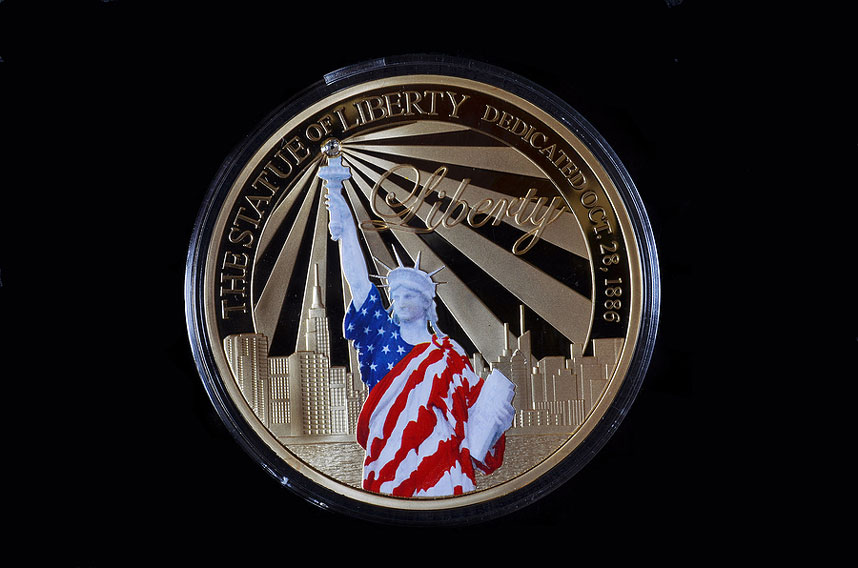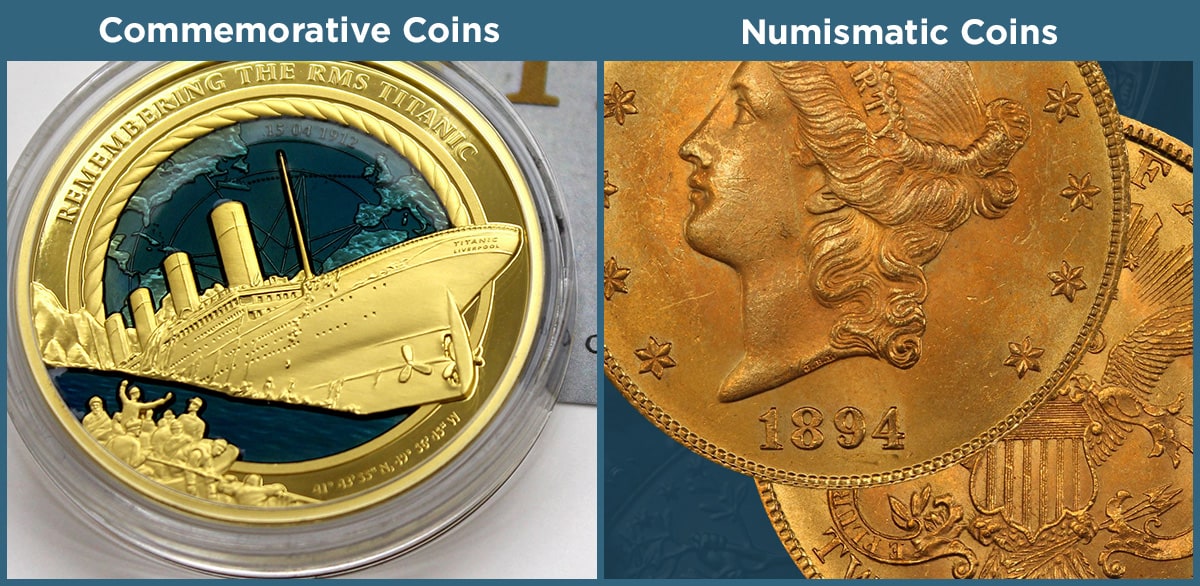 The allure of commemorative coins isn’t surprising. Many investors believe these assets check all the boxes of a worthwhile investment: limited production, high luster, special designs, and authenticity certificates. However, all that glitters is NOT gold in the world of commemorative coins. A quick peak behind the curtain reveals these coins aren’t as valuable as many investors might think.
The allure of commemorative coins isn’t surprising. Many investors believe these assets check all the boxes of a worthwhile investment: limited production, high luster, special designs, and authenticity certificates. However, all that glitters is NOT gold in the world of commemorative coins. A quick peak behind the curtain reveals these coins aren’t as valuable as many investors might think.
What are commemorative coins?
Commemorative coins are unique coins produced to celebrate, honor, or commemorate (hence, the name) a special event, person, or place. For example, it’s common to see prominent heads of state, popular landmarks, and historical events on this novelty coinage. Commemorative coins are distinct from standard minting in a few ways.
First and foremost, they’re not typically recognized as legal tender which means many are barred from circulation. On top of that commemorative coins can be produced by private companies instead of being limited to official government mints. Confusingly, some government mints produce commemorative coins on top of standard circulating coinage.
Private vs Public Commemorative Coins
Private commemorative coins are those produced by non-governmental mints. As a result, these private companies can produce coinage with virtually no restrictions. On the other hand, commemorative coins produced by the US Mint are bound by legislation. The government only produces coins at the behest of Congress.
Are commemorative coins worth anything?
Commemorative coin value is determined by a number of factors including scarcity (how many similar coins exist), demand (how many people want the coin), and purity (what percentage of the coin is precious metal). Unfortunately, most commemorative coins fall short in these metrics.
High mintage numbers
Despite what you might hear from that convincing TV sales pitch, most of these coins are produced in high numbers. Since any private mint is free to produce commemorative coins, there’s no regulation on how many enter the public sphere. These coins celebrate popular events or people which means several mints often produce similar coins at the same time, leading to a saturated market.
Low demand
Demand for commemorative coins tends to reach its zenith right after release when publicity is strong and associated trends are still relevant. When the next collectible coin is inevitably released, people naturally lose interest and demand drops quickly. As the interest wanes, so does commemorative coin value. As a result, many investors struggle to find secondary markets for these collectible coins.
Misleading purity
The US government, along with most government mints, sets official purity ratings to which all legal coinage is beholden. This practice is intended to mitigate the number of counterfeit coins in circulation. Commemorative coins don’t have standard purity ratings which makes it harder for investors to accurately gauge their value. It’s common practice for producers to mint commemorative coins with undervalued alloys with a thin veneer of gold or silver while overselling their purity.
High premiums
Private sellers tend to overstate commemorative coin value well above their inherent worth. Even the US Mint admits to adding a surcharge to the base price of their commemorative coins. If the government is openly adding high surcharges, just imagine how much private companies drive up their prices. These exaggerated dealer premiums mean you’re automatically losing money immediately following a purchase of a commemorative coin.
👉 Suggested Reading: 4 Reasons To Avoid Investing In Commemorative Coins
Commemorative Coins vs Numismatic Coins

Commemorative coins tend to be poor investment vehicles when compared to true numismatic coinage. While investment-grade coins hold inherent value due to real scarcity, high levels of purity, and historical significance, commemorative coin value tends to derive from their collectability. This crucial distinction results in disparate markets which further reinforces the varying values of investment-grade and commemorative coins.
Numismatic coins tend to attract serious investors interested in optimizing their ROI, protecting their wealth against economic pressures, and maintaining price stability. Commemorative coins are primarily geared toward people interested in historic memorabilia and collecting for collecting sake.
Collecting vs Investing in Coins
If you’re interested in using gold and silver coins as investment vehicles instead of just collectibles, you’re better off avoiding commemorative coins in favor of investment-grade coinage. You can learn more about investing in these numismatic assets by downloading our FREE Precious Metals Investment Guide.
👉 Suggested Reading: Collectible and Rare Coins: What’s The Difference?


